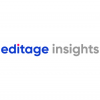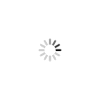- 文章
- 熱門
期刊影響因子和其他測量期刊影響力的標準

我們都知道,全球學者都面臨著英文論文發表高分期刊的壓力。期刊影響因子(IF)是公認的衡量期刊關注度和影響力的指標。因此,很多研究者主要根據影響因子選擇論文發表的目標期刊。
影響因子一般是個比值。如果要計算期刊X的2010年影響因子:2
IFX?=期刊 X 在 2009 年和 2008 年發表的所有論文于 2010 年收到的引用數
? ? ? ? ? ? ? ? ? ? ? ? ? 期刊 X 于2009年和2008年發表的所有論文數
你可能已經看出,2010年的影響因子只能在2011年及以后使用。期刊影響因子每年計算一次,并公布在湯森路透發表的期刊引用報告(JCR)中。
影響因子的使用和誤用
1.?作為衡量期刊關注度的客觀指標。可選擇的期刊數量巨大,期刊的影響因子提供了衡量期刊發表論文整體質量的客觀指標。一般來說,影響因子值越高,期刊的關注度越大。?
2.?圖書館選擇期刊。目前全球有數以萬計的期刊出版物。影響因子為圖書館管理員提供了一種判定保留哪些期刊并收錄哪些新期刊的工具。
3.?學術評估。影響因子通常被用于研究者的學術評估過程,但是,這種使用方法是不正確的,因為影響因子僅表示期刊的整體質量,而不是期刊發表的某篇論文。3?
使用影響因子比較或評估期刊時,應注意以下事項:4,5
- 期刊影響因子的絕對值沒有意義。例如:影響因子為2的期刊在微生物學等領域關注度不很高,但在海洋學領域卻有較高關注度。專業期刊 – 如疾病類期刊或關注災害管理的期刊的影響因子值可能會較低,因為期刊論文主要為少數專業讀者閱讀或引用。6
- 學科趨向不同。不同研究領域的引用習慣不同。因此,影響因子不能用于比較不同學科的期刊。例如:醫學論文的引用頻率遠高于數學或工程類論文;因此,醫學期刊的影響因子高于數學及工程期刊。7
- 影響因子在特定領域意義不大。例如:在計算機科學領域,會議論文被視為科技論文的主要形式。
- 無影響因子不能代表期刊不重要。湯森路透根據他們的引文數據庫計算影響因子。數據庫收入了約25,000家同行評審期刊的幾乎一半。其數據庫的覆蓋范圍分布也不均勻,某些學科領域期刊的收錄率要高于其它領域。另外,雖然湯森路透數據庫收錄了來自60個國家的期刊,但來自開發中國家的期刊并不多,而且只有少數非英語期刊。
因影響因子導致的期刊慣例的改變
一般來說,影響因子對期刊編輯與對研究者同等重要。影響因子可用于衡量期刊的業績,因此很多期刊編輯為提高期刊的影響因子而面臨著壓力。9另外,影響因子也可以被操控。3,10-12例如:據發現,綜述論文的引用數量最大,因此期刊可盡量多地發表綜述文章提高期刊的影響因子。期刊編輯可以論文是否容易被引用為基礎來選擇論文。期刊也可要求作者引用期刊的其它論文(成為“自我引用”)。
影響因子的替代指標
影響因子占主導地位的局面已持續數十年。但是,近年來,人們開發出了衡量期刊關注度的替代指標。據發現,所有這些指標都互相密切相關。也就是說,根據這些指標進行的期刊排名幾乎都是一致的,雖然期刊的絕對排名存在差異。因此,在選擇關注或準備發表論文的期刊時,研究者可自由地使用以下任何一種指標,而無需局限于影響因子。13-15
數據來源:Scopus
查詢網址:http://www.scimagojr.com/?免費?
數據來源:ISI Web of Science
查詢位置:Journal Citation Reports?需注冊
數據來源:Scopus
查詢網址:http://www.journalindicators.com/?免費
數據來源:美國科學情報研究所(ISI)Web of Science
查詢網址:http://www.eigenfactor.org/?免費
結論
期刊影響因子用于評估期刊是非常有用的工具,但是,其使用方法必須合理。在決定投稿期刊時,不能只參考影響因子。必須牢記,關注較窄學科范圍的期刊(如:診斷分子病理學)的影響因子可能低于關注學科范圍廣泛的期刊(如:病理學雜志)。最后,研究者應采取其它指標評估期刊質量,如單篇文章源標準化影響 和特征因子分值,以更好地了解期刊的關注度和影響力。
- Brischoux F & Cook TR (2009).?Juniors seek an end to the impact factor race. BioScience, 59(8), 638-9. doi: 10.1525/bio.2009.59.8.2.
? - Garfield E (1994). The Thomson Reuters impact factor. Last accessed: August 30, 2011. Available at:?http://thomsonreuters.com/products_services/science/free/essays/impact_factor/
? - For example, see Seglen PO (1997).?Why the impact factor of journals should not be used for evaluating research. BMJ, 314: 497-502.
? - Neuberger J & Counsell C (2002).?Impact factors: Uses and abuses. European Journal of Gastroenterology & Hepatology, 14(3), 209-11.
? - Adler R, Ewing J, Taylor P (2008). Citation statistics: A report from the International Mathematical Union (IMU) in cooperation with the International Council of Industrial and Applied Mathematics (ICIAM) and the Institute of Mathematical Statistics (IMS). Joint Committee on Quantitative Assessment of Research. Available at:?http://www.mathunion.org/fileadmin/IMU/Report/CitationStatistics.pdf
? - Sloan P & Needleman I (2000).?Impact Factor. British Dental Journal, 189: 1. doi:10.1038/sj.bdj.4800583.
? - Podlubny I (2005).?Comparison of scientific impact expressed by the number of citations in different fields of science. Scientometrics, 64(1), 95-99. doi: 10.1007/s11192-005-0240-0.
? - House of Commons Science and Technology Committee (2011).?Peer review in scientific publications?Vol 1. House of Commons: London, UK.
? - Smith R (2006).?Commentary: The power of the unrelenting impact factor? Is it a force for good or harm??International Journal of Epidemiology, 35: 1129-30. doi: 10.1093/ije/dyl191
? - Smith R (1997).?Journal accused of manipulating impact factor. BMJ, 314: 461.
? - Sevinc A (2004).?Manipulating impact factor: An unethical issue or an editor’s choice??Swiss Medical Weekly, 134: 410.
? - Falagas ME & Alexiou VG (2008).?The top-ten in journal impact factor manipulation. Archivum Immunologiae et Therapiae Experimentalis, 56(4): 223-6. doi: 10.1007/s00005-008-0024-5.
? - Falagas ME, Kouranos VD, Arencibia-Jorge R, Karageorgopoulos DE (2008).?Comparison of SCImago journal rank indicator with journal impact factor. The FASEB Journal, 22(8): 2623-8. doi: 10.1096/fj.08-107938.
? - Rizkallah J & Sin DD (2010).?Integrative approach to quality assessment of medical journals using impact factor, eigenfactor, and article influence scores. PloS One, 5(4): e10204. doi: 10.1371/journal.pone.0010204.
? - Rousseau R, the STIMULATE 8 Group (2009). On the relation between the WoS impact factor, the Eigenfactor, the SCImago Journal Rank, the Article Influence Score and the journal h-index. Available from E-LIS archive, ID: 16448;?http://eprints.rclis.org/16448/.
? - Moed HF (2011).?The source-normalized impact per paper is a valid and sophisticated indicator of journal citation impact. Journal of the American Society for Information Science and Technology, 62(1): 211-3. doi: 10.1002/asi.21424.
?
?
?






